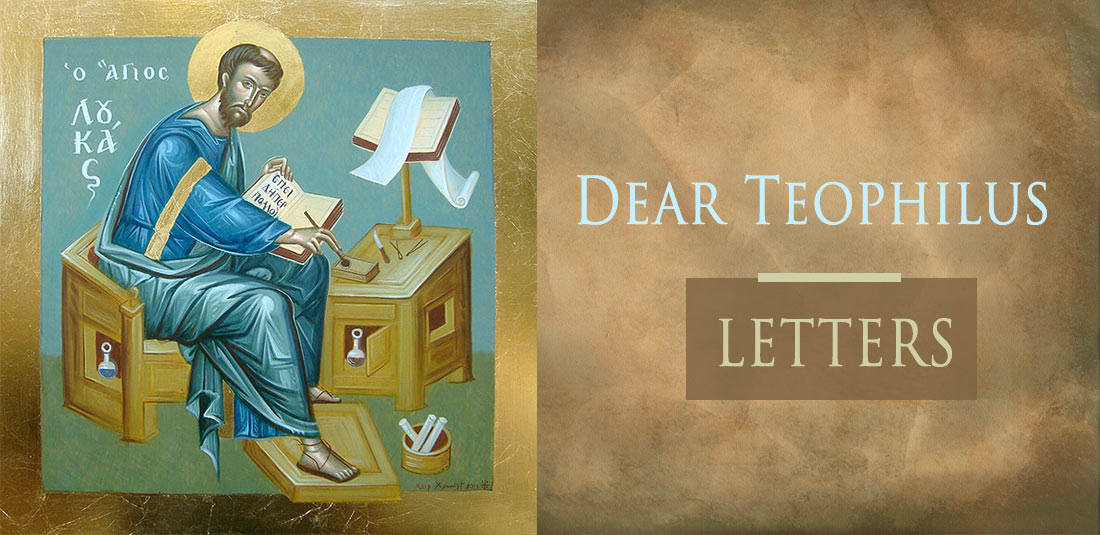Dear Theophilus , (Letter 81. )
You often raise the seeming objections of science to belief and I want to further challenge these erroneous views of yours. The main problem is that you still think in categories of 19th. and 20th. century science which are really passé. This is sometimes referred to as classical physics and we see now that its application in trying to better understand the world is limited and in error. Science has moved on and the picture it presents of reality is quite different from the one that was offered before. Unfortunately, many still refer to nineteenth century physics in their arguments against faith and belief. Some of the topics of the new science are difficult to grasp but we need to at least familiarize ourselves with them in order to discuss science intelligibly.
The world of physics can be divided into two – the classical concept of physics and the quantum mechanical concept which originated in the 1920’s. Classical physics has well-defined quantities such as position, trajectories, momentum, mass. With quantum mechanics comes a much messier and more complicated and difficult, to model and picture, world, but it became obvious in the 1920’s that classical physics was inadequate to describe and explain phenomena that occur at the atomic level. I’ll give you just one example although many could be cited.
It was known that atoms consist of a positively charged center called the nucleus and outside of the nucleus there are negatively charged electrons. We know from basic electrical theory that positive charges attract negative charges. So, what keeps the electrons from falling into the nucleus and thereby destroying the atom? It was proposed, using classical physics, that electrons are orbiting around the nucleus and this centripetal force counteracted the electrostatic attractions and through this the atom attained a stable existence. But, had it? A charge that is moving in a circular orbit is said to be accelerating and therefore it should lose energy, slow down, and again, collapse into the nucleus. But this does not happen and no classical formulation could explain why. This, and other questions led to the development of quantum mechanics which did explain why atoms could exist in spite of the electrostatic attractions between the nucleus and the electrons.
Classical physics deals very well with the macro world that we, as people, are used to but when it comes to the very small, classical physics breaks down and cannot be applied to those very tiny particles that exist within atoms, for example. Heisenberg and Scrödinger applied quantum mechanics to the electron and the results that they got were baffling if one still clung to classical physics views. What they found was that the electron does not occupy an exact location at any given time, it doesn’t move in a regular path, but is instead spread out over time and space according to the laws of probability. This was totally unpredictable in classic physics.
It also became clear that we were limited in terms of what we can learn about systems that we were studying. If we were to locate an electron then we would not be able to say what it was doing (in terms of momentum or energy). If we were able to say what an electron was doing, we would not be able to specify its location. And, what is important, this was not due to some inaccuracy or inadequacy in our instruments – this was an inherent hiddenness within these very small particles. In other words, there is a limit to what we can learn about nature and this limit is due to the way that nature is organized. This precludes our being able to give a final and definitive answer as to nature and even more so, about God.
Einstein was not happy with this state of affairs and proposed a thought experiment (this is an experiment for which we have not developed an experimental procedure so that we could carry it out in the lab). The gist of the experiment goes something like this. If particle A were to be split into particles B and C then, according to quantum mechanics, certain properties had to be maintained for particles B and C. For example, if the spin of A were 0, then the spins of B and C must add up to 0, that is, +1 and –1 (don’t worry about what is meant by spin – it is just a mathematical property of the system). If the spin of B were changed then quantum mechanics predicted that the spin of C would have to change because of the law of conservation of spin and this would have to happen instantaneously, that is, faster than the speed of light. Since according to Einstein’s theory this is impossible then quantum mechanics must be wrong. This is sometimes referred to as the EPR experiment.
In 1964 the Bell theorem was proposed to address this question and the actual experiments were carried out in the seventies and eighties. These all showed that Einstein was wrong and quantum mechanics was right. Ironically, C. S. Lewis insinuated these results over 70 years ago when he said that ‘If the movement of individual units (of Nature) are events on their own, events which do not interlock with all other events, then these movements are not part of Nature. He implied that there is a hidden interconnectedness within Nature From this we see that a classical reductionist description of nature will not do.
Classical physics still operates at certain levels and it gives good results such as planning the launch of satellites and engineering endeavors. The reason why it works is due to the fact that it gives a very good approximation at the macro level and this works, but, at the level of the very small, the approximations become magnified in effect and importance.
The Holy Grail of physics has been the pursuit of what is called the Theory of Everything (TOE) and this was something that Einstein worked on until his death. Central to this theory is the effort to unify the different types of energy or forces that we know about. There are four of them – gravity, electromagnetism, the weak nuclear force, and the strong nuclear force. Einstein made a step forward in unifying time and space, and unifying energy and mass; therefore, it seemed that it would be possible to unify the four forces into one as we would expect since they all operate within the same reality. The aim is to show that all types of energy should be resolvable into one fundamental underlying form of energy.
We are all familiar with gravity since we experience it every moment of our lives and it deals with the attraction between different bodies such as planets or us and the Earth. Electromagnetism is a union of electricity and magnetism and Maxwell, through a series of famous equations, showed that electricity and magnetism are really the same force. The weak nuclear force is what allows atoms to undergo radioactive decay. This an important property for maintaining the Earth’s temperature through radioactive elements present within the Earth which generate heat through radioactive decomposition of elements such as uranium and thorium. The strong nuclear force is what holds atoms together and without this force we would have no atoms, no molecules, and no us.
The two pillars of modern physics are Einstein’s Theory of General Relativity and Quantum Mechanics and no one has managed, to this day, to combine these two theories. General Relativity is for the macro world whereas Quantum Mechanics applies to the micro world. Both theories have been tested many times and have come through successfully – they both seem correct but no effort to combine them into one overarching theory has been successful. This spells a major problem for physics of today.
This is further complicated by the fact that visible matter and energy form only about 5% of our universe. The great bulk of the universe is referred to as dark matter and dark energy. They are called dark because we have not developed techniques to interact with them and thereby learn about them in some detail. We cannot get any information from them and they remain essentially terra incognito. In fact, if we consider the red shift, which indicates that the universe is expanding, we notice something very strange. The expansion of the universe is accelerating and we have no good explanation for this observation. What has been postulated is that dark matter may act as an anti-gravity substance and this is what is causing the universe to speed up in its expansion. In summary, to make a strong statement about the origin and purpose of the universe based on 5% evidence seems somewhat foolhardy but that is what those espousing classical physics do.
I have given you enough to think about and to study but the topic is not ended and we will take it up again in the next letter. I grant you that what we are discussing is difficult but it is necessary in order to withstand the groundless claims that are made about the supposed superiority of science over faith.
Sincerely,
Bar-Abbas.






